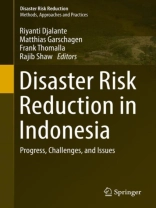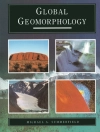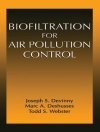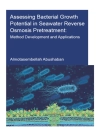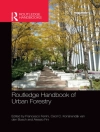This book is a unique, transdisciplinary summary of the state of the art of disaster risk reduction (DRR) in Indonesia. It provides a comprehensive overview of disaster risk governance across all levels and multiple actors including diverse perspectives from practitioners and researchers on the challenges and progress of DRR in Indonesia. The book includes novel and emerging topics such as the role of culture, religion, psychology and the media in DRR. It is essential reading for students, researchers, and policy makers seeking to understand the nature and variety of environmental hazards and risk patterns affecting Indonesia.
Following the introduction, the book has four main parts of key discussions. Part I presents disaster risk governance from national to local level and its integration into development sectors, Part II focuses on the roles of different actors for DRR, Part III discusses emerging issues in DRR research and practice, and Part IV puts forward variety of methods and studies to measure hazards, risks and community resilience.
Table of Content
Chapter 1. Introduction (Riyanti Djalante).- Part 1. Disaster Risk Governance from National to Local Level and its Integration into Development Sectors.- Chapter 2. A Review of Disaster Trends and Disaster Risk Governance in Indonesia: 1900-2015 (Riyanti Djalante).- Chapter 3. Toward Integrated and Inclusive Disaster Risk Reduction in Indonesia: Review of Regulatory Frameworks and Institutional Networks (Andri NR Mardiah).- Chapter 4. Disaster Risk Reduction in Post-Decentralization Indonesia: Institutional Arrangements and Changes (Ashok Das).- Chapter 5. Disaster Risk Reduction Capacity and Capability of Local Government in Indonesia (M.C. Daly).- Chapter 6. Examination of Legal and Institutional Frameworks for Land and Forest Fires Management: from national to community level (Nurhidayah Laely).- Chapter 7. Disaster Education and School Safety Governance after the 2004 Indian Ocean Tsunami in Indonesia: from national policy to local implementation (Mizan Bustanul).- Chapter 8. Mainstreaming Disaster Risk Reduction (DRR) and Climate Change Adaptation in the School Curriculum in Indonesia (Nurmalahayati).- Chapter 9. Spatial Planning, DRR and CCA integration in Indonesia: Progress, Challenges and Approach (Nurrohman Wijaya).- Part 2. Roles of Different Actors for DRR.- Chapter 10. The Role And Capacity of Local Government in Maintaining Post-Disaster Road Reconstruction Assets (Ezri Hayat).- Chapter 11. The Role of Manufacturing Firms As Stakeholders For Adaptation To Flood: Towards Integrative Adaptive Regional Development in Jakarta (Thomas Neise).- Chapter 12. The Role of Media in Representing Disaster in Indonesia: Between God, Nature and Human Representation (Muzayin Nazaruddin).- Chapter 13. The Role and Capacity of Disabled People’s Organisations as Policy Advocates for Disability Inclusive DRR in Indonesia (Michelle Villeneuve).- Chapter 14. The Role of The Panglima Laot Customary Institution in The 2004 Indian Ocean Tsunami Recovery in Aceh (Michael Boyland).- Chapter 15. The Role of Faith-Based Organizations As Risk Communicators: Case Study Of Bandung, West Java (Farah Mulyasari).- Chapter 16. The Role of A Women’s Collective In Rebuilding Livelihoods After a Disaster: Case Study Of Salam Village, Yogyakarta (Karen E Mc Namara).- Chapter 17. Science Communication for Disaster Risk Reduction: Role of LIPI through COMPRESS Program (Irina Rafliana).- Part 3. Emerging Issues in DRR Research and Practice.- Chapter 18. Ecosystem-based DRR in Indonesia: Unfolding Challenges and Opportunities (Annisa Triyanti).- Chapter 19. Culture and Community Resilience to flood: Case Study of Urban Coastal Community in Jakarta (Gusti Ayu Ketut Surtiari).- Chapter 20. Religious interpretations and psychological recovery from the Aceh 2004 tsunami: The Promise of Heaven, Healing the Trauma (Maila Dinia Husni Rahiem).- Part 4. Measuring Hazards, Risks and Community Resilience.- Chapter 21. Analysis of Flood Risk In Polder Systems In Jakarta: Present And Future (Yus Budiyono).- Chapter 22. Modeling Forest and Land Fires Risk Level: Case Study of Kapuas District, Central Kalimantan (Achmad Siddik Thoha).- Chapter 23. Tsunami Resilient Preparedness Indicators: The Effects of Integrating Religious Teaching and Roles of Religious Leaders (Wignyo Adiyoso).- Chapter 24. Social Capital and Disaster Preparedness in Indonesia: A Quantitative Assessment Through Binary Logistic Regression (Mohammad Dokhi).- Chapter 25. Measuring Community Resilience To Natural Hazard: Case Study of Yogyakarta Province (H.Z. Anwar).
<
About the author
Dr Riyanti Djalante is a Research Associate at the United Nations University Institute for Environment and Human Security (UNU-EHS) in Bonn, Germany, supported by an Alexander von Humboldt Fellowship for Experienced Researchers.
Dr Djalante’s research focuses in disaster risk reduction (DRR) and climate change adaptation (CCA), resilience, vulnerability, and environmental governance for sustainable development.
She is involved in many scientific collaborations including as a lead author of the IPCC Special Report on global warming of 1.5 °C above pre-industrial levels, UNEP Global Environmental Outlook 6 and the UNISDR Words into Action guides following the Sendai Framework for DRR.
She is involved in scientific networks including: Earth System Governance (ESG), International Social Science Council (ISSC), Urbanization and Global Environmental Change (UGEC).
In her home country of Indonesia, she has 10 years’ experience working for Kendari City local government for development planning and Disaster Management. In addition, Dr Djalante has consulted international development agencies on issues related to governance, DRR and CCA.
